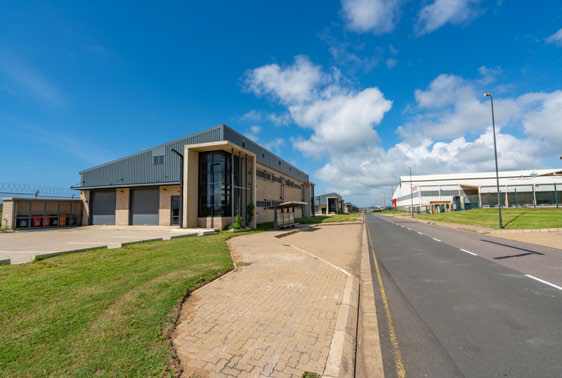RENEWABLE SOURCES

RENEWABLE ENERGY
Currently, some 24.4% of energy used in Dube AgriZone greenhouses is obtained through renewable sources.

SOLAR POWER
Dube AgriZone's array photovoltaic solar panels currently generate 940kWh annually.

WASTE TO ENERGY PLANT
Dube TradePort Corporation's commitment to environmental protection and the enhancement of renewable energy production has led to the development of plans for a waste-to-energy plant
WASTE TO ENERGY PLANT
Dube TradePort Corporation's commitment to environmental protection and the enhancement of renewable energy production has led to the development of plans for a waste-to-energy plant.
This will involve the use of organic waste generated in Dube AgriZone's greenhouses and packhouses, as well as additional waste streams generated elsewhere in the precinct being converted into energy through technologies such as Anaerobic Digesters.

REHABILITATION AND ALIEN CLEARING
In line with the Record of Decision (RoD) for the construction and operation of the airport, which included an obligation to create a delineated conservation area within the Dube TradePort precinct, the organisation plays an ongoing rehabilitation and restoration role as a means of mitigating against the loss of habitat and species incurred during the initial construction phase of the precinct. In this regard, some 37.4ha were rehabilitated during the 2019/20 financial year alone, ensuring Dube TradePort Corporation's 91.59% environmental compliance with its environmental obligations.

WATER MANAGEMENT
Dube TradePort Corporation has successfully reduced its dependence on municipal water sources, with Dube AgriZone displaying the greatest improvement. Its water consumption endeavours have resulted in usage being reduced from 514.37kl/day to 229.02kl/day, representing a drop in consumption of some 45%.

RAIN WATER HARVESTING
Rain water harvesting plays a considerable role in efforts to reduce municipal water consumption and currently Dube TradePort Corporation is able to store 44.4 million litres of water in its ponds.

IRRIGATION
Further efforts with regard to water use have resulted in about 80% of the precinct's irrigation needs being fed through rain water harvesting.

DUBE CITY
Rainwater is effectively utilised for the flushing of all toilets and urinals located in the 29° South building, situated in Dube City.

BIODIVERSITY
Dube TradePort Corporation has made significant strides in removing alien plant species from the precinct, replacing such plants with locally-occurring indigenous species, whilst simultaneously improving the overall management of natural areas.

WASTE GENERATION
The percentage of waste being disposed of in landfill sites has shown significant improvement and is constantly decreasing. Previously, some 66% of total waste was considered non-recyclable. However, in recent times non-recyclable waste volumes have decreased, while total waste volumes have increased.
